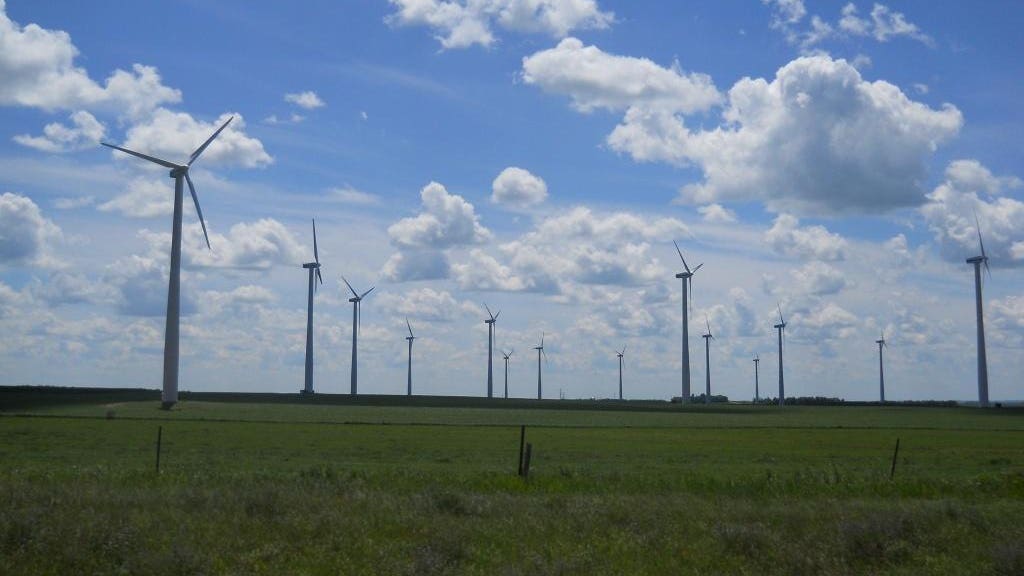In a recent interview between David Remnick, editor of The New Yorker, and former Vice-President Al Gore, Mr. Gore stated that we already have all the climate solutions we need — we just have to “flip the switch.” In the face of so much climate pessimism, it was a breath of fresh air to hear him phrase it this way.
In the Urban Future Lab at NYU alone, we have approximately 170 deployable solutions. But up until recently, it hasn’t been clear how we and other climate innovators can activate and scale these solutions. In September of this year, the U.S. Department of Energy attempted to provide more clarity by co-hosting the first-ever Deploy23 conference in Washington, D.C., co-sponsored by the Cleantech Leaders Roundtable. The aim of the conference was to help those of us who are not in the Department of Energy understand what programs are available to fund our climate innovations, as well as opportunities to collaborate with the government to rapidly deploy the technologies that exist.
So, returning to Mr. Gore’s statement: Where is that switch we need to flip, and why haven’t we yet?
We can only flip the switch once certain barriers are removed. The barriers to climate action are not technological — they are societal, political and financial. Interestingly enough, however, we are at a point where the solutions that can break these barriers down are already in motion — the switch has been in the inactive position for too long. Forces are realigning to flip that switch.
The societal issues are largely NIMBY and a lack of education. In the past, local organizations have fought against transmission and the siting of wind and solar. However, there are now millions of people whose lives have been devastated by floods, tornadoes and forest fires — which show no signs of abating. The same organizations that have balked at green projects before may now be open to change, but we still need to educate them. While Gen Z’s climate anxiety has precipitated into an outsized engagement in climate change, fossil fuel lobbying on social media and in the press still spreads misinformation to susceptible adults. (Big Oil spent more than $1 billion on ads between 2008–2018.)
On the political front, we finally have the market pull that certainty and replicability can create through good policy. The Inflation Reduction Act (IRA), passed last year, was the government’s largest investment in climate tech, and gave us hundreds of billions in multi-year tax credits that can tilt the scales for climate and energy companies, particularly in solar, wind and nuclear.
Furthermore, thanks to the IRA and the Chips Science Act, $150-billion-worth of new projects have begun construction in the last two years, largely in red states. These projects cover a wide range of climate applications, including batteries, wind, solar, transmission, offshore wind, and other industrial manufacturing technologies. There is an additional $240 billion in the pipeline, awaiting approval.
The economic implications are enormous — these policies have created 97,000 jobs already and are on target to create 1.5 million jobs in the coming years. Unfortunately, it’s not all rosy. We are still set back by a nonfunctional Congress and the looming threat of a fascist “no-government-is-good-government” administration coming into both the White House and Congress in the next election cycle. There are high stakes. If the policy certainty evaporates, so will the investment in manufacturing and job creation.
Lastly, from a financial perspective, these new policies have made many clean energy projects bankable, where they previously were not. When an expensive manufacturing facility secures government funding, investors feel more confident because they see the government as a reliable funding partner. In other words, a factory that is successfully built already promises a revenue stream, but when it’s backed by the U.S. government, there is a much higher probability of future revenue, and private investors are much more inclined to co-invest or supply debt.
But if these are the barriers to “flipping the switch,” then we arrive at the question: Whose hand controls the switch?
The answer is simple — ours. Each of us has a hand on the switch that can determine the future of climate policy and action. If we wish to stave off the harm of worsening floods, wildfires and heat waves, we need to support the location of renewables as well as transmission and clean manufacturing in our states. We need to wield the power of our votes to end the dysfunction in the federal government and continue the current administration’s policies that are creating 1.5 million green jobs — jobs that do not require workers to breathe coal dust or live through oil spills and gas explosions. Now, more than ever, we have a robust infrastructure and the momentum to make the deployment of climate solutions, and a green future, possible. Our hands are already on the switch, whether we like it or not. Now we just have to flip it.
Read the full article here





